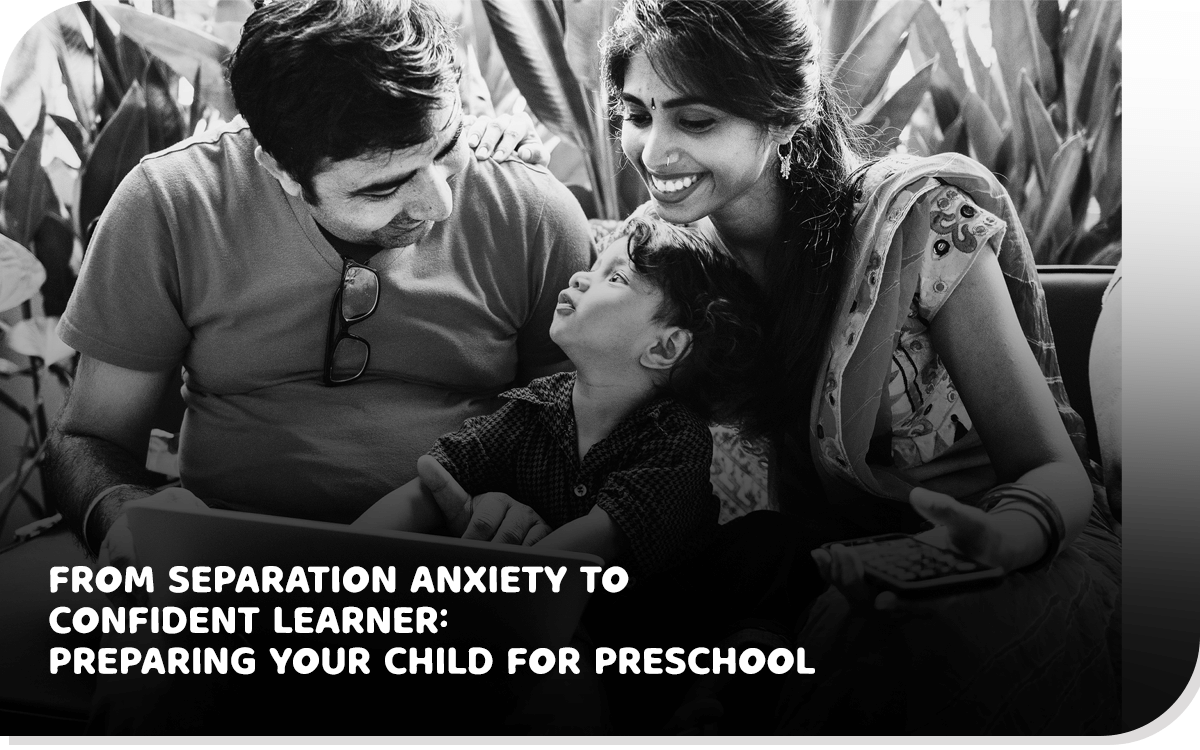
Preschool is a big transition for both the child and the parents. The child has to learn to spend time apart from their home, their comfort zone. It is a difficult journey for any toddler. A big milestone for both your child and you. Learning to spend time apart can be a difficult transition, but beginning the formal learning journey is exciting, too. This change can be challenging for toddlers, as it demands emotional security, patience, and mental flexibility, traits that they are still developing. Many parents’ preschool preparation checklist includes emphasizing excitement and fun, new backpacks, games, and friends.
However, this approach doesn’t equip children to handle the difficult emotions that accompany major transitions. Instead, it is better if your preschool preparation activities set realistic expectations and help the child build familiarity with upcoming changes, acknowledging that even positive transitions can feel overwhelming for a three-year-old. Here’s a parent's guide to preschool preparation activities before their child enters an early childhood education program.
Establishing a calm, consistent morning routine is a key part of any preschool preparation checklist. The first thing is to adjust your child’s bedtime and wake-up schedule a few weeks before preschool starts, so they ease into the new routine without stress. Start by picking out clothes together the night before and sharing breakfast in the morning to positively shape the rest of their day. When thinking about how to prepare for preschool, practice the full getting-ready flow from changing into clothes to eating breakfast and packing the backpack. Schedule at least one morning every week that requires you and your child to leave the house by 8 AM. This can help your child transition more confidently into the preschool routine.
A helpful step in any preschool preparation checklist is visiting the school together before the first day. Let your child explore the classroom, meet the teachers, and play on the playground so the environment feels familiar. This simple preview is an important preschool preparation activity that helps reduce first-day anxiety and builds confidence. When considering how to prepare for preschool, creating positive early experiences on campus makes the transition smoother. Familiarity turns the new preschool setting into a place your child can approach with comfort and excitement.
Role-play to prep up
Creating a preschool environment at home and pretending to be a student and teacher can be one of the crucial parenting tips for the preschooler. An important part of any preschool preparation checklist is helping your child get comfortable with both the routines and communication expected in a classroom. One of the best preschool preparation activities is pretend play, acting out story time, singing, or nap time, and even letting your child play the “teacher.” This playful practice not only makes preschool feel familiar but also creates a safe space for your child to start verbalizing their needs, just as they will need to do in a real preschool environment. Since your children often rely on you to anticipate their needs, pretend school scenarios help them learn to notice their body cues and express them confidently. As part of how to prepare for preschool, you can support this by asking open-ended questions, teaching simple ways to identify the signs their body is telling them, and building both self-awareness and independence from day one.
A helpful step in any preschool preparation checklist is building your child’s independence with everyday dressing tasks. Here’s a simple preschool preparation activity when it comes to preparing them for day 1. Minor actions like practicing buttoning shirts, zipping up pants or skirts, putting on a backpack, or hanging a jacket on a hook can make the morning routine smoother and give your toddler a confidence boost. Turning these skills into games, such as timing how quickly they can put on their shoes, keeps the learning fun and encouraging. These abilities are genuinely important, as children will need to put on and take off their shoes, socks, jackets, and hats multiple times throughout the preschool day. When thinking about how to prepare for preschool, helping your child master these dressing skills also supports perceptual development, balance, and coordination, making them feel more capable and prepared for the new environment.
Your preschool preparation checklist should include this important tip. Separation anxiety is real and not just parents need to prepare their toddler, but the preschool also needs to be empathetic towards their learners and their transition. They need to comfort them with support, empathy and kindness. The educators needs to treat preschoolers with utmost care by offering them an environment that protects their right to be a child.
One such preschool is Beginners World. Beginners World is dedicated to creating a safe, supportive, and stimulating environment where children are encouraged to explore, discover, and learn. The preschool aims to provide enriching experiences that nurture essential life skills while nurturing the right of every child to truly be a child. Guided by this philosophy, Beginners World's early education programs strive to instil a lifelong love for learning by fostering curiosity, creativity, and critical thinking. With a strong emphasis on individualized attention, the school values each child’s uniqueness and works to build a community where parents are active partners and children feel secure, confident, and inspired to grow.
These tips can be every parent’s guide to preschool when it comes to introducing their toddler to their first learning environment.